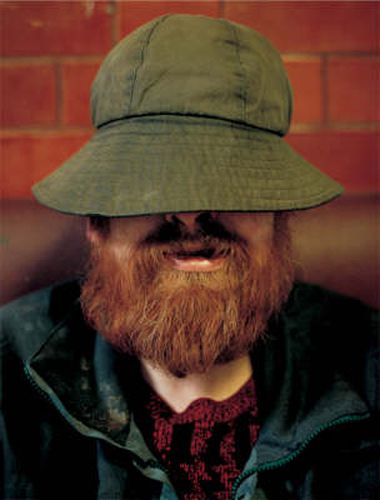Readings Newsletter
Become a Readings Member to make your shopping experience even easier.
Sign in or sign up for free!
You’re not far away from qualifying for FREE standard shipping within Australia
You’ve qualified for FREE standard shipping within Australia
The cart is loading…






One hundred years ago, Lord Rowton took it into his head to build a hostel. Being a peer of the realm the grandiose came easily to him, and in 1905 the massive, even forbidding, red-brick edifice arose in Camden Town in London, filled with 382 beds for impoverished manual labourers. Clean sheets, washing facilities and nourishing food were to be provided for the inmates. In fact the great building, Arlington House, was designed to be, and quickly became billets for the destitute Irish navvies who crossed the sea to find work in the capital. Today the Irish connection has not gone; almost 70 per cent of residents are Irish, and although they are equally poor, few of them work or labour - most are alcoholics. A picture of Arlington House in the past can be found in George Orwell’s Down and Out in Paris and London . It is not pleasant. The photographer Deirdre O'Callaghan has brought together four years’ work at the refuge, her record of the despair, humour and hope on the faces of the residents, a gallery of a largely expatriate community at odds with the world outside. O'Callaghan’s pictures, along with Bono’s text also record the work of the hostel itself in trying to reintegrate the residents into that world, photographs of clarity and wonder taken during trips to Ireland for the inmates. Some have lived at Arlington House for 30 years; many have not seen their families for as long.
$9.00 standard shipping within Australia
FREE standard shipping within Australia for orders over $100.00
Express & International shipping calculated at checkout
One hundred years ago, Lord Rowton took it into his head to build a hostel. Being a peer of the realm the grandiose came easily to him, and in 1905 the massive, even forbidding, red-brick edifice arose in Camden Town in London, filled with 382 beds for impoverished manual labourers. Clean sheets, washing facilities and nourishing food were to be provided for the inmates. In fact the great building, Arlington House, was designed to be, and quickly became billets for the destitute Irish navvies who crossed the sea to find work in the capital. Today the Irish connection has not gone; almost 70 per cent of residents are Irish, and although they are equally poor, few of them work or labour - most are alcoholics. A picture of Arlington House in the past can be found in George Orwell’s Down and Out in Paris and London . It is not pleasant. The photographer Deirdre O'Callaghan has brought together four years’ work at the refuge, her record of the despair, humour and hope on the faces of the residents, a gallery of a largely expatriate community at odds with the world outside. O'Callaghan’s pictures, along with Bono’s text also record the work of the hostel itself in trying to reintegrate the residents into that world, photographs of clarity and wonder taken during trips to Ireland for the inmates. Some have lived at Arlington House for 30 years; many have not seen their families for as long.